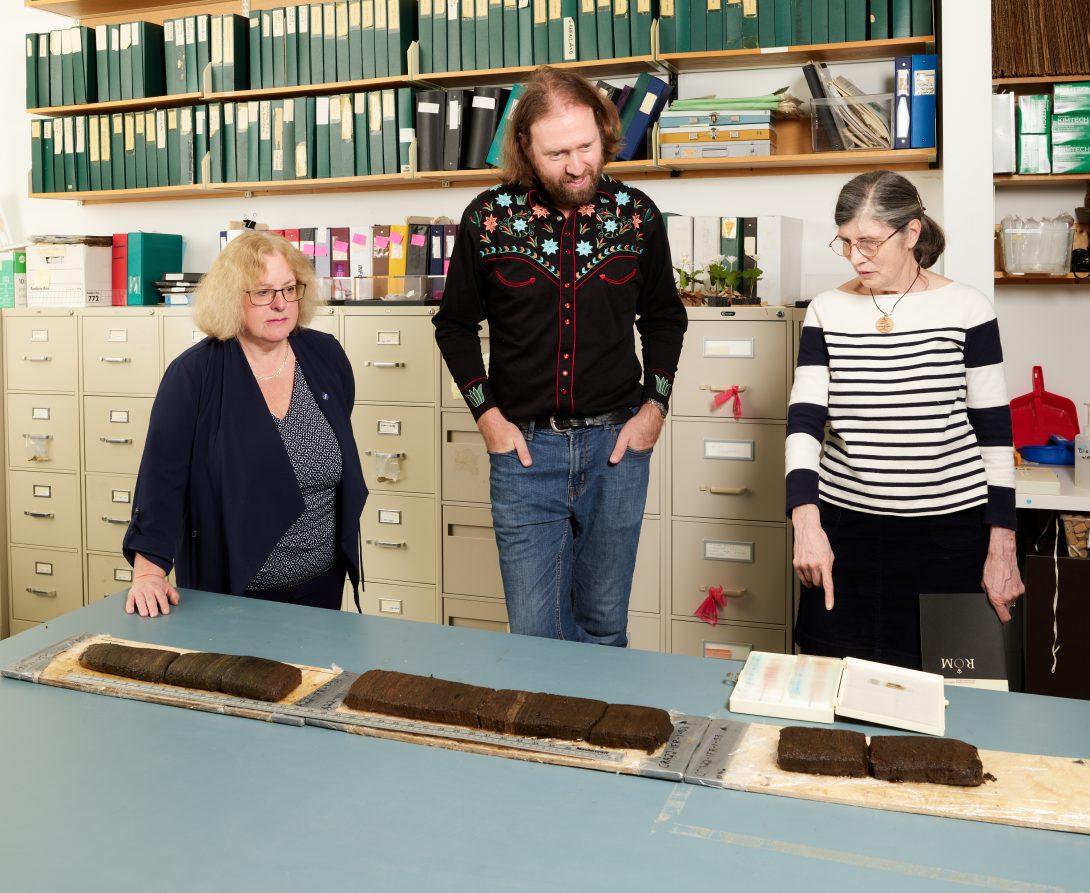In the Media: Crawford Lake selected as the Anthropocene Golden Spike candidate
In 1970, U of T professor and ROM curator John (“Jock”) McAndrews began to retrieve frozen sediment cores from Crawford Lake, near Milton Ontario. He was primarily seeking to reconstruct historical plant community assemblages in southern Ontario, and the meromictic (non-mixing) nature of Crawford Lake produced varved (annually laminated) sediment cores, making it a particularly suitable location for high quality historical environmental records that could be accurately dated. The work of his Master’s Student Maria Boyko further revealed maize pollen in lower sediment layers (indicating Indigenous farming of corn), which ultimately led to two archaeological excavations and the recognition that this site housed two Attawandaron or pre-Wendat villages from the late 13th to late 15th Centuries.

Fifty years later, professor Francine McCarthy at Brock University (an ex-graduate student of Jock McAndrews) has become the leader of “Team Crawford” and championed the consideration and ultimate selection of Crawford Lake as a Global Boundary Stratotype Section and Point (GSSP) “golden spike” candidate of an Anthropocene epoch. Although this epoch is yet to be formalized, the many decades of important research carried out on Crawford Lake, beginning with and building upon the work of professor Jock McAndrews and his research group, has shown this lake to be recognized as the most suitable location on the planet to describe the global impact of humans on planetary systems and processes. Another member of Team Crawford is Dr. Soren Brothers, Assistant Professor in the Department of Ecology and Evolutionary Biology at U of T and the Allan and Helaine Shiff Curator of Climate Change at ROM. Through his curatorial role at ROM, and as a limnologist whose research focuses on interactions between lakes and global change, Dr. Brothers has accepted a sediment core from Crawford Lake as part of his museum collection.
Read more:
- The Canadian lake that marks when humans started changing the planet July 11, 2023 | THE GLOBE AND MAIL
- How a lake in Ontario can define our relationship with our planet July 11, 2023 | ROM
- Canada’s Crawford Lake chosen as ‘golden spike’ to mark proposed new epoch July 12, 2023 | CBC
- Crawford Lake: What the past can teach us about urban living today July 19, 2023 | THE CONVERSATION
